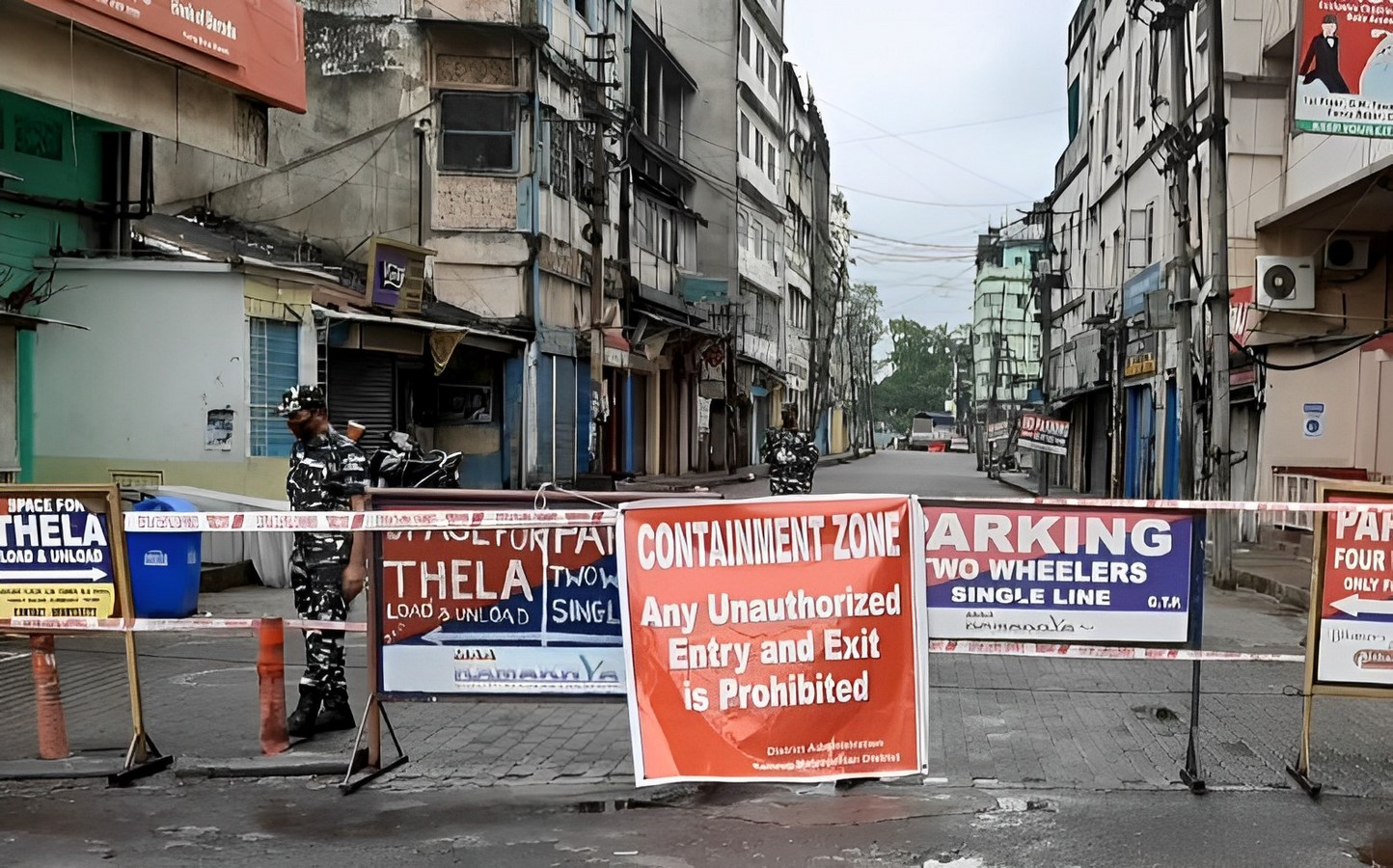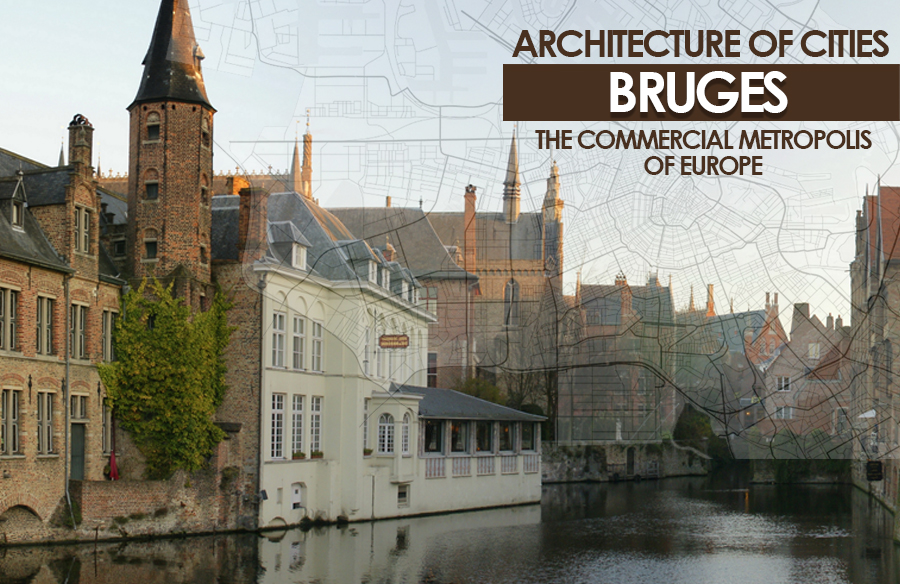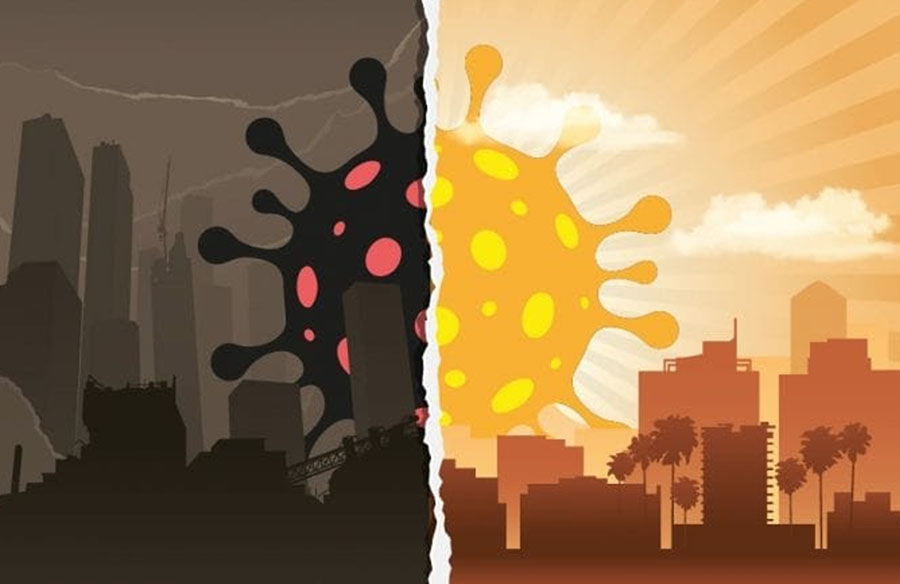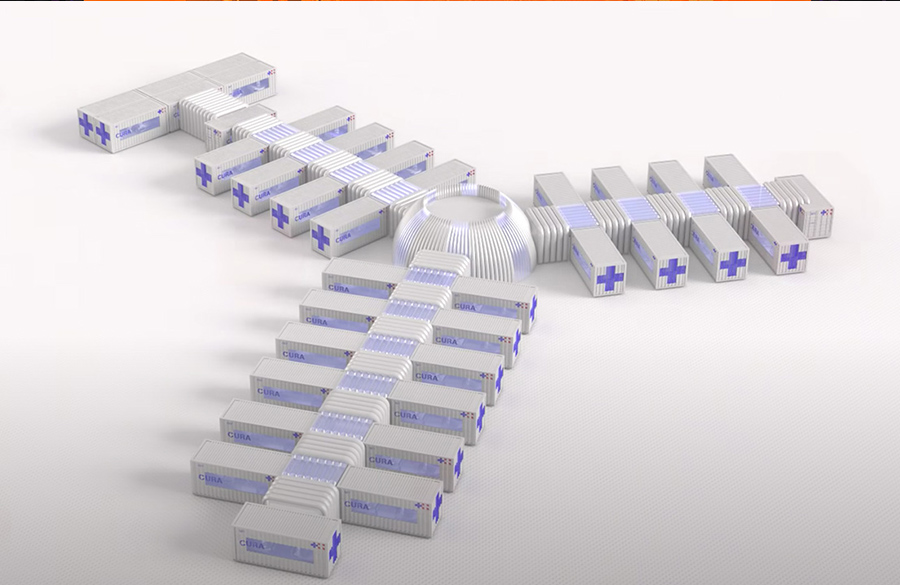“PM Modi announces 21-day lockdown as COVID-19 toll touches 12” – The Hindu.
“Post-pandemic recovery is uneven” – BT (Business Today)
“The virus that shut down the world” – The UN News
These are the articles we all have seen for the past two years. It has only been a couple of days since we somewhat stopped hearing about the news in this context. 2020, the year we welcomed so passionately and hoped to be the year of “change”, sure brought many changes into our lives. A ‘memorable’ year that will always be remembered as the ‘year of the lockdown’ has left an impression.

Roads were blocked, countries shut down, and people locked themselves inside their houses, all because a virus had encroached on the world. Cities without sleep were shut down, with no sight of animals on the streets, let alone humans. Mumbai, known for standing tall against all disasters, a city that never slows down, a city that could not be contained even after the worst attacks and always stood back up, was suddenly taken down by a small virus. The outbreak, however, had a worldwide effect, not just on health but also on economics and infrastructure.
People were separated from their families, many lost their jobs, and an enraged population wanted to come down to the streets to go against the government and question them regarding their survival but were too scared to be ‘infected’. Workers who suffice on their daily wages struggled to get their jobs, and immigrants tried to return to their families, not wanting to be alone or away from their close ones during this difficult time. Hundreds of workers sneak into the streets at night, trying to return to their ‘home’- a place anyone would want to be in this ‘undecided’ time.
These were the pictures we saw daily, the news we heard with all our attention, but we could do nothing but pray for each other’s safety and follow what the authorities told us. Sure, after a few months, we adjusted to the lockdown. We tried to break down the big problem into smaller sections and take down one problem at a time. Be it work from home for people worried about their jobs and family survival or online lectures for students and professors. Though we could not return to our everyday lifestyles, we somehow managed to create a ‘new normal.
Today, when we discuss the lockdown or how the pandemic affected us, we have plenty of negative points to mention. The negative effect it caused on the economy, the social disruption, the psychological impact, and so on. But like every coin has two sides, the pandemic and its harmful effects also brought some positive changes worldwide, especially in architecture.
Architecture is a field that focuses on ‘people’ since the ‘user’ of the space is generally the focus of any project for the designers. When the pandemic hit the world, and people’s lifestyles changed, architecture was affected too. For many designers, the lockdown became the time to reminisce and rethink their approach to design. The pandemic helped people realize the worth of a healthy environment and better air quality.
Designing flexible spaces with multi-functional properties is not just a theme anymore. It has become a requirement.
Previously, ‘home’ was a space where people relaxed—a place where a person returns to after a tiring day. And thus, the design of the home was based on the ‘comfort’ factors matching the users’ requirements. But post-pandemic, the need for a house changed. With the rise in work-from-home and online education, houses are not just spaces to relax and spend time with loved ones; but also a part of the work environment. A separate workspace or a study needs to be considered in designing interiors. Similarly, the need for adaptive office spaces also came into the picture.
“Companies will want the ability to quickly modify and scale their workspaces in the case that something like this were to happen again in the future”, says Framery, a pods manufacturer.
Increased focus on green buildings
Green building is a structure that uses a lesser carbon footprint and focuses on passive strategies resulting in a less negative environmental impact.

Sustainability is a concept many designers have tried to incorporate into their designs for a long time now. They have been trying to encourage others to use these measures and make it a ‘must use’ factor in designing, but they failed. On the other hand, the pandemic finally made it possible and encouraged using sustainability as a ‘trend’ in design.
Since the pandemic raised a question regarding the safety of humankind, people are tending towards sustainable habitats. They have now focused on ‘healthy living, and the requirement for higher air quality is in demand. People demand better access to more beneficial facilities, such as local amenities and outdoor spaces, and use recycled and sustainable materials.
Redesigning public spaces
Public spaces have always been an essential aspect of socializing. These are the spaces used by different sectors of society; hence, creating a flexible space for all types of users is challenging. But with the pandemic, the way public spaces are used and designed has changed.

People were ‘trapped’ inside their houses for almost two years, and it is clear that they were more than eager to go out again. The importance of public spaces has changed for people, and thus creating healthier areas and adhering to social distancing norms has become a priority while designing.
Going digital

Although most designers and companies have already used digital platforms to present their designs, they have become more prominent post-pandemic. Most designers find it better to express their ideas using digital media rather than traditional ways. Designers have now started to explore new ideas and find ways to incorporate them into life with the help of technology. Pre-checking the form through digital means and studying its behavior in adverse situations using different software have increased. This helps designers identify the structural issues before construction and improvise the structures’ adaptability.
Increased use of off-site prefabrication
Although people have somewhat gotten back to their everyday lifestyles, the question of safety remains the same. “Precaution is better than cure” is being implemented, and it goes the same even for the construction industry.

Prefabrication has been in popularity for a long time because of its efficiency, but with the requirements for social distancing and health measures, it is now in increased demand. It is another positive effect of the pandemic since it is cost-effective for making up for lost time and helps maintain safety standards.
Adaptive reuse of existing structures
Adaptive reuse is the process of using existing structures to serve new purposes. Reutilizing old spaces have always been fascinating for many designers. But post-pandemic, it has become a need. It is an efficient approach towards sustainability and has been in demand worldwide. During the pandemic, it was evident that we needed more flexible spaces to be converted into medical facilities to be used for housing more affected people. And that has made the designers realize how effective adaptability is in creating emergency facilities.
Reviewing capital and managing supply chains
During the pandemic, the construction industry might be the most affected sector considering that most projects were delayed or cancelled. While trying to maintain social distancing norms or following the lockdown, construction sites took a halt. The delay in delivering projects could have improved client-developer relations. Many designers faced difficulties in terms of finance, and those who did not were faced with supply chain difficulties. The pandemic exposed how poorly construction sites managed disasters like lockdowns.
The designers have now become more careful in planning the project and maintaining the funds in case such a mishap is to be faced again. Regarding supply materials, the designers have started to secure the critical materials in advance and identified alternate materials in case of emergency.
To conclude, It’s already been two years, but the impact of the pandemic remains—both in negative and positive ways. And though the time of lockdown will always be remembered as a ‘dark time’, it is impossible to neglect the positive effects it left us. The pandemic was more like an ‘eye-opener’ for everyone and helped us be better for ourselves.
References:
Shibani, A., Hassan, D. and Shakir, N. (no date) The effects of pandemic on construction industry in the UK, Mediterranean Journal of Social Sciences. Available at: https://www.richtmann.org/journal/index.php/mjss/article/view/12313
Statistics explained (no date) Statistics Explained. Available at: https://ec.europa.eu/eurostat/statistics-explained/index.php?oldid=486937
How construction can emerge stronger after coronavirus (2022) McKinsey & Company. McKinsey & Company. Available at: https://www.mckinsey.com/capabilities/operations/our-insights/how-construction-can-emerge-stronger-after-coronavirus
Blog (2020) The pandemic is changing the future of architecture-now is a good time to study interior design, The Blog. Available at: https://jgu.edu.in/blog/the-pandemic-is-changing-the-future-of-architecture-now-is-a-good-time-to-study-interior-design/
Sengupta, V. (2020) Post-pandemic architecture and design to change our cities and spaces, Post-pandemic architecture and design to change our cities and spaces – The Hindu BusinessLine. Available at: https://www.thehindubusinessline.com/blink/cover/post-pandemic-architecture-and-design-to-change-our-cities-and-spaces/article32866664.ece
















